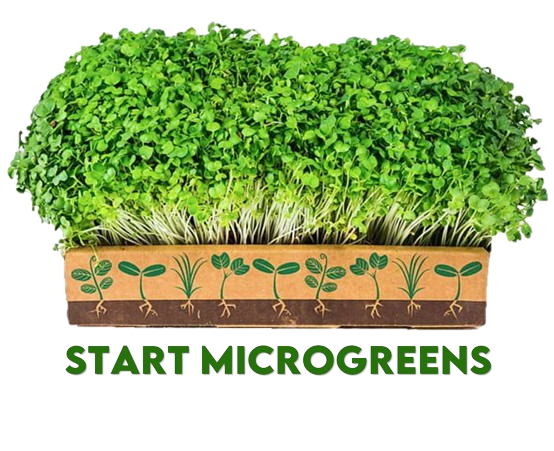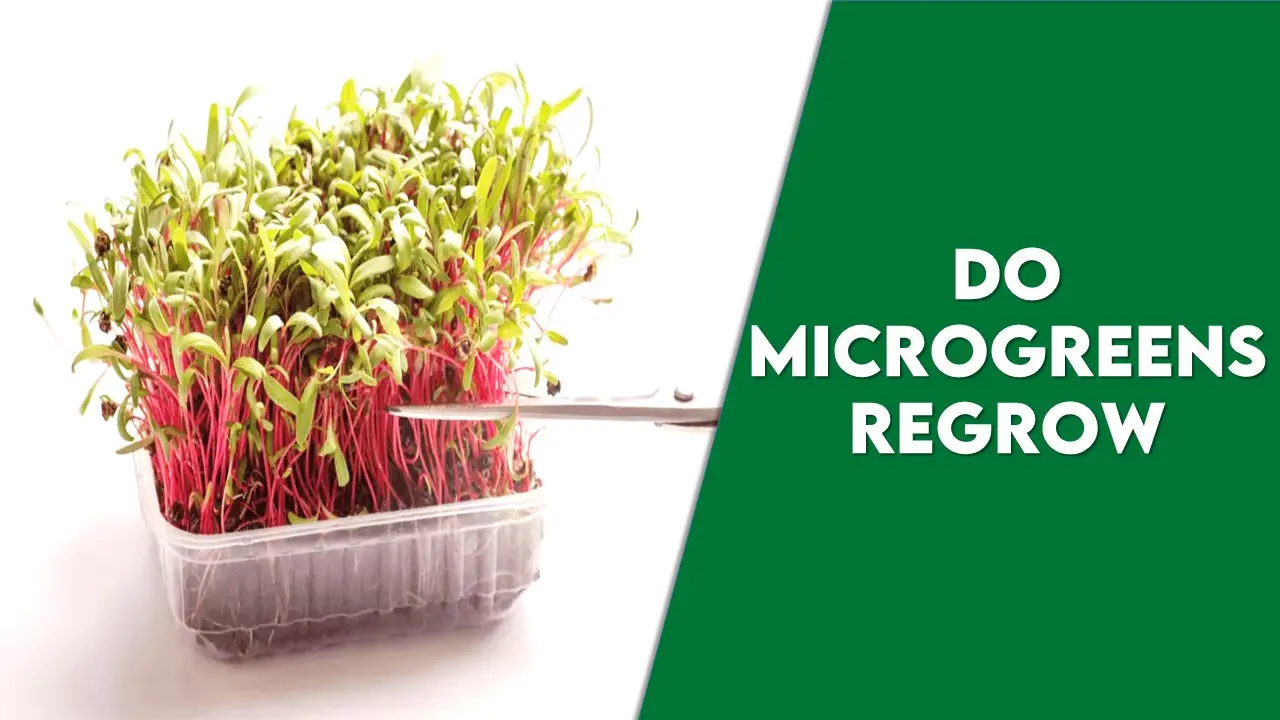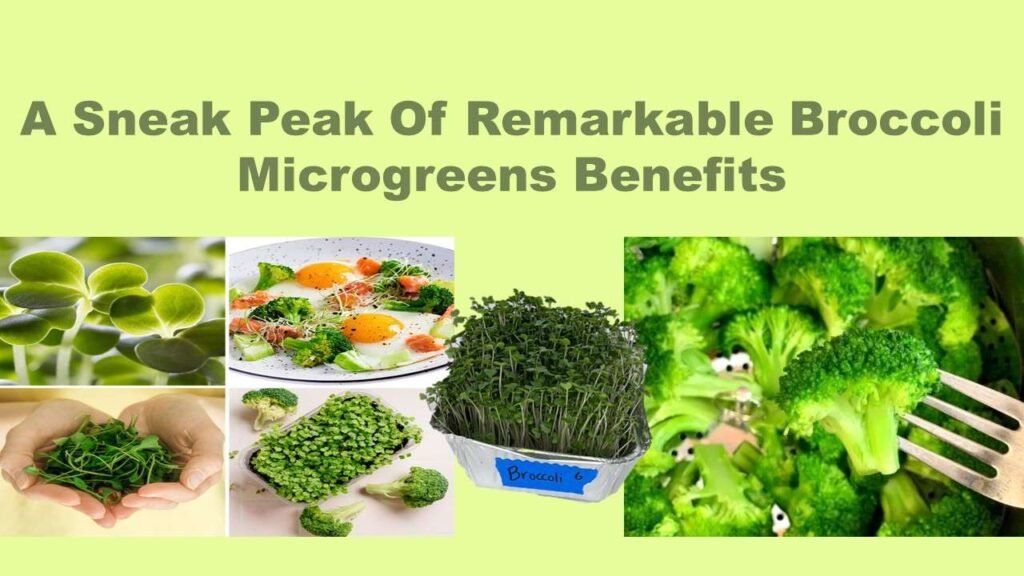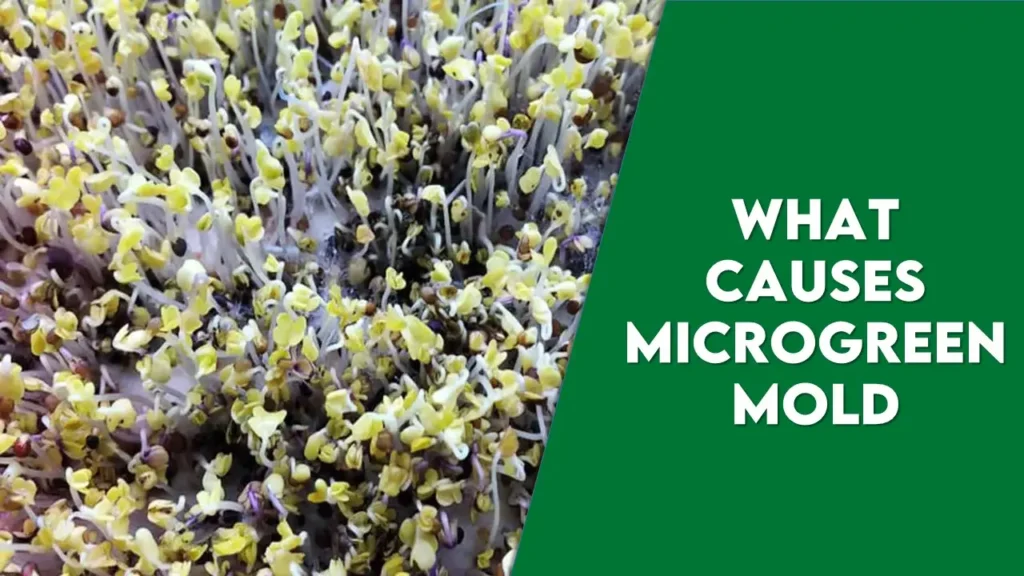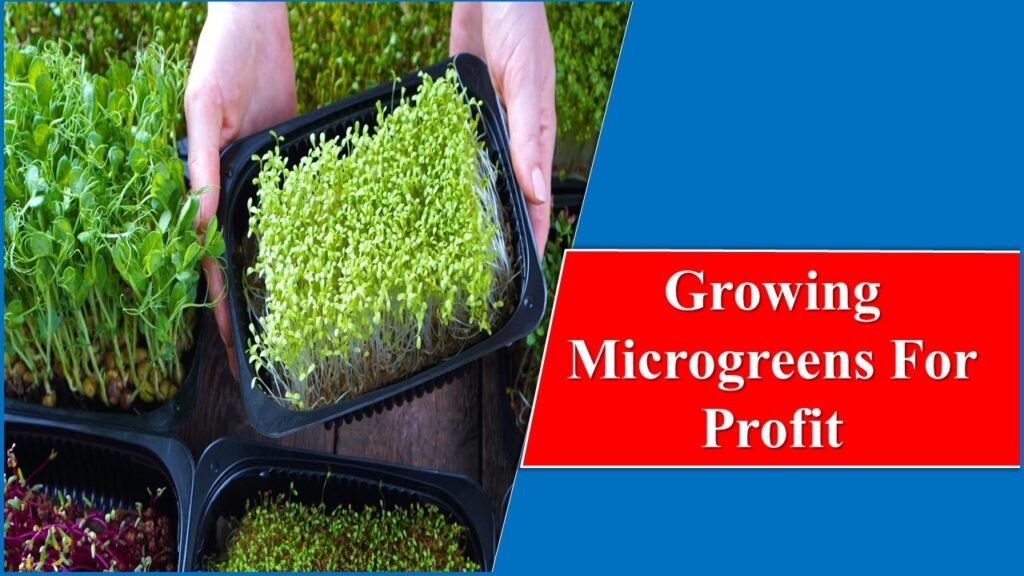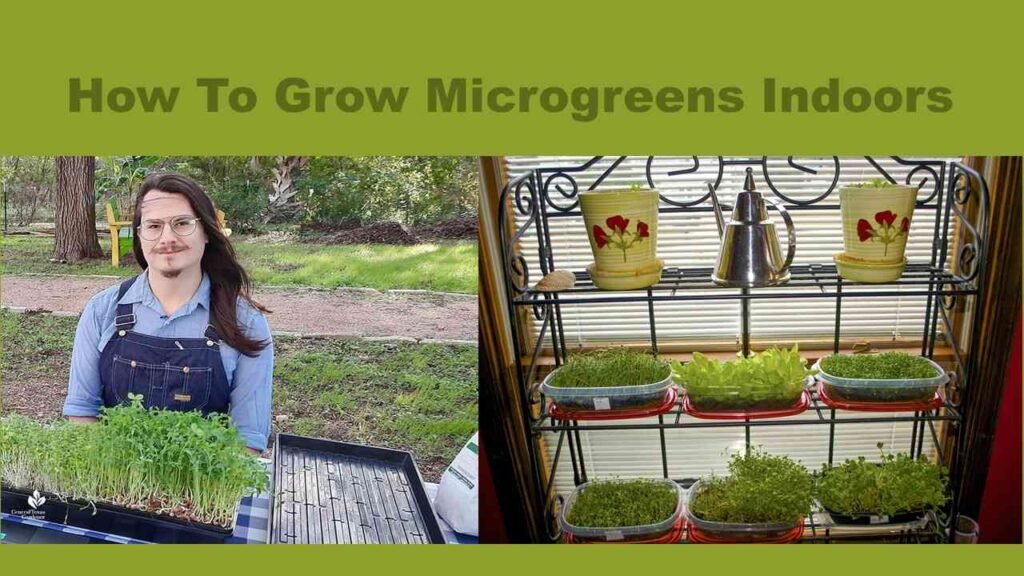Do Microgreens Regrow? – Best Ways To Regrow Them
It has not been a problem for you to imagine if it is possible to prolong the life of these greens for several harvests. Now the question arises, do microgreens regrow? Considering that the issue of sustainable living and do-it-yourself gardening is going to be one of the trendiest topics lately, the idea of regrowing microgreens has emerged as one of the most fascinating innovations that can be used. Starting your microgreen supply and harvesting reduces your seed input producing more yields while at the same time, you get to put less wastage into the environment, a good deal for you, the environment, and your wallet.
From knowing which microgreen varieties require the most regeneration processing to mastering the harvesting and re-seeding procedures right here in your home or garden plot, we will take you through all you need to know to get the best yields out of regrowing microgreens. Whether you are an expert gardener wanting to enhance your green journey to the max or a newbie who is enthusiastic to learn self-sustainable gardening, this article is designed especially for you. We shall explore if it is possible to regrow them or if should we go for new planting as and when needed.
How Do Microgreens Grow Usually?
Before knowing about do microgreens regrow, it is essential to be aware about how they usually grow. The microgreens have their development process using their seeds being planted in the right growing medium, adding moisture and sunlight, and eventually the seeds will germinate, and then start growing into seedlings.
After setting the seeds into the soil, light watering should be performed on them and they are put in a place with enough light. At the start of several days, you notice the seeds germinating and sending out little roots and buds. As time goes on, the seedlings grow up to reach the first true leaf and the conditional stage of the species and usually takes 7-21 days to reach the harvestable height.
The period is dependent on the particular traits of each variety. Now, the microgreens are picked barely above the soil line using clean scissors or a cutter. During the initial growing stage, keeping the space clean is crucial to achieving optimum results. Such practices involve keeping low levels of moisture, offering enough ventilation, and letting them enjoy the right quantity of sunlight for instance.
These guidelines will allow growers to be able to produce mixing microgreens created from seeds which additionally will be a great addition of fresh nutritious flavor in various dishes. I guess by now your question of do microgreens regrow has been answered.
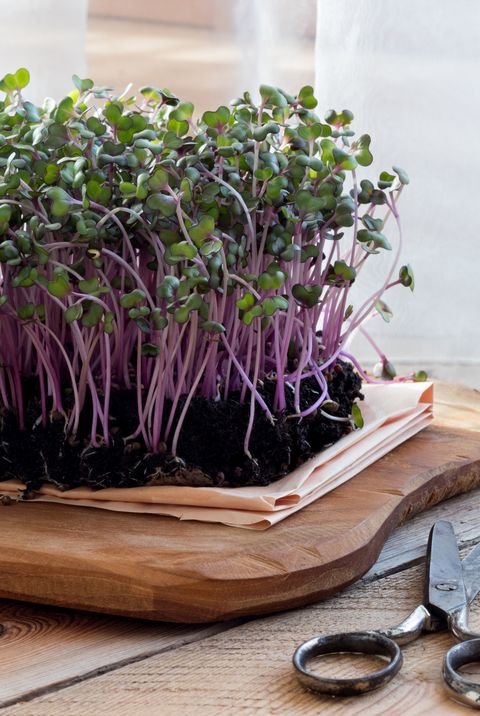
What Factors Influence The Growth Process Of Microgreens?
Temperature
The microgreens prosper within a sheltered environment. For most of the species, the ideal temperature range is between 15C to 24C. Extreme temperatures can cause different problems: growth in plants can be hindered and defects can appear in the development of plants.
Light
Enough light is necessary for to plants look healthier. They generally need 12 to 16 hours of light per day, the type which preferably originates either from sunlight or grow lights. The distant plant will be affected by insufficient light, which results in stretched growth or pale leaves.
Watering
They need to be constantly supplied with water throughout their growing stages. Excessive watering may cause root rot and insufficient water content will be the reason for the browning of leaves and checking of plants. Pour in water onto the microgreens with drizzling to prevent the process of sprouting.
Humidity
correcting the relative humidity is important to gain the complement of the microgreen growth. Criminally high humidity or dryness-producing conditions may result in the inhibition of growing, mold, and several other diseases. Look for a moderate position with humidity, approximately 50-60%.
Air Circulation
Sectioning air circulation is paramount to maintaining the distance upon the cure of mold and to healthy formatting of the plant. Adequate ventilation promotes the removal of water condensate around plants and reduces the environmental conditions conducive to fungal infections.
Growing Medium
Only providing growing media that is conducive to microgreens’ growth is essential for their development. For the majority of microgreens, growing happens in soil-less mediums such as coconut coir, peat moss, and vermiculite. These platforms give a good circulation and give that a good maintenance of moisture level.
Nutrient Levels
Microgreens need only organic material and a special blend of nutrients for proper development. This particular aspect could be used if a soilless growing medium follows, so liquid fertilizer diluted in half or quarter strength needs to be provided. Do not over-fertilize and therefore, access to the right nutrients or burning of plants is avoided.
Variety
Various kinds of microgreens might be particular in their explanation of growth requirements. The others might prefer a little different environment or a varying reaction to the growth rate.
Do Microgreens Regrow?
Microgreens often cannot grow back after she is been cut off. Rather than some of the herbs or the leafy greens for example, which regenerate from the bottom or stem after cutting, microgreens are harvested only by cutting them above the soil level so the entire plant is removed. While harvesting the microgreens may have the shoots cut from the whole plant, they won’t regrow from the stem.
While some species of microgreens for instance, pea shoots or sunflower leaves may grow side shoots or new leaves after their being tipped, some other varieties don’t. The secondary sprouts may not be as tasty and robust as the initial harvest; nevertheless, they are edible, serving mainly to add texture and taste to the dishes. In principle, microgreens harvesting is singular-crop per growing as farmers generally sow new seeds for each crop to perpetually provide tasty, young greens for sale. Now ask yourself do microgreens regrow and what is the main factor influencing it?
Which Microgreens Can Regrow?
If you ask me do microgreens regrow, I would say no. But there are some exceptions to this. Occasionally people harvest microgreens but they don’t spare regrowing. In certain cases though, you may harvest twice because the plant may get secondary growth. These varieties include:
Radish Microgreens
Radish microgreens are treated as a luxury treat due to their spicy taste and colorful look. Most types of wood perennials do not retrench after cutting although some growers have had sporadic success in attracting secondary growth from the remaining stumps into shaping new bulbs.
Cilantro Microgreens
The small sprouts of cilantro are known for their flavor closely resembling that of mature, full-grown cilantro herb. Most aerial parts of plants are trimmed the very first time but some growers found that the stems have sprouts growing from their bases in the second harvest.
Sunflower Greens
One of the remarkable things about sunflower greens is that they are a little bit nutty. They are also a little bit crunchy in texture. Like pea shoots, they are capable of regrowing after pruning. That way, when the regrowth occurs, another crop of leaves of smaller leaves will be harvested for the second harvesting.
Pea Shoots
It is the pea shoots, known for their tender twines and sweet taste, that distinguish them from other green vegetables. Following the process of harvest, the pleasantly brittle stems that are left can produce more growth giving rise to the second harvest of the new and younger shoots, which are usually less remunerative.
While the later regrowing of microgreens post-cutting is not a guaranteed process depending on factors such as growing conditions, variety, and the cutting technique, regrowth is usually possible. In further terms, if you don’t use the secondary growth, the harvest will not be as healthy or tasty as the primary harvest. Thus, in most cases, the microgreens are grown as a monoculture, with new growth starting with each planting to ensure that quality and flavor remain the same.
Are There Any Techniques To Regrow Microgreens
Replanting
Microgreens can be replanted and will regrow from the roots. You just have to place them in the soil and make sure they are watered. Make sure to build them up to ground level and keep the growth moist. The green onion, if taken care of and grown under favorable conditions, may regrow.
Hydroponic System
You can establish a hydroponic system for microgreen regrowth. Move the leftover root, stem into the hydroponic setup that has nutrient-rich water. Therefore, one of the keys to rapid growth is the practice of employing this technique.
Regrowth Trays
Some kits accommodate regrowing microgreens with trays included in the pack. These trays have separate sections where you are supposed to replant the roots and stems of the harvested microgreens. First, they ensure that all living cells close to the contamination source and those exposed to the contaminated water on the surface are dead to prevent sustaining life and creating further problems.
Continuous Harvest
Instead of propagating your plant from the roots or stem cuttings, snip young stems or leaves, and they will grow into new plants without gaps in harvesting. In place of extracting the mature microgreens, plant new seeds to get older plants. This maintains a continually flowing microgreens source requiring no repeated planting.
Conclusion
This is all about the article Do microgreens regrow. Through the employment of practices like replanting, hydroponic systems, or continuous harvest methods, the clients can prolong the lives of microgreens and it will minimize waste generation and have a continuous flow of fresh greens. Yet, the growth of the microgreens in its successful way depends on other aspects, such as light, temperature, watering, and the kind of seed they use.
Mitigating these variables with timely crop care and growing microgreens leads to a satisfactory outcome of hidden multiple rounds of harvesting and attracts not only culinary but also eco-friendly appetites. Regrowing microgreens using the skill turned out not only to enhance self-sufficiency but also friendliness to the environment through discovering that the nutritional goodness of these plants can be restored to their original form after the cycles.
